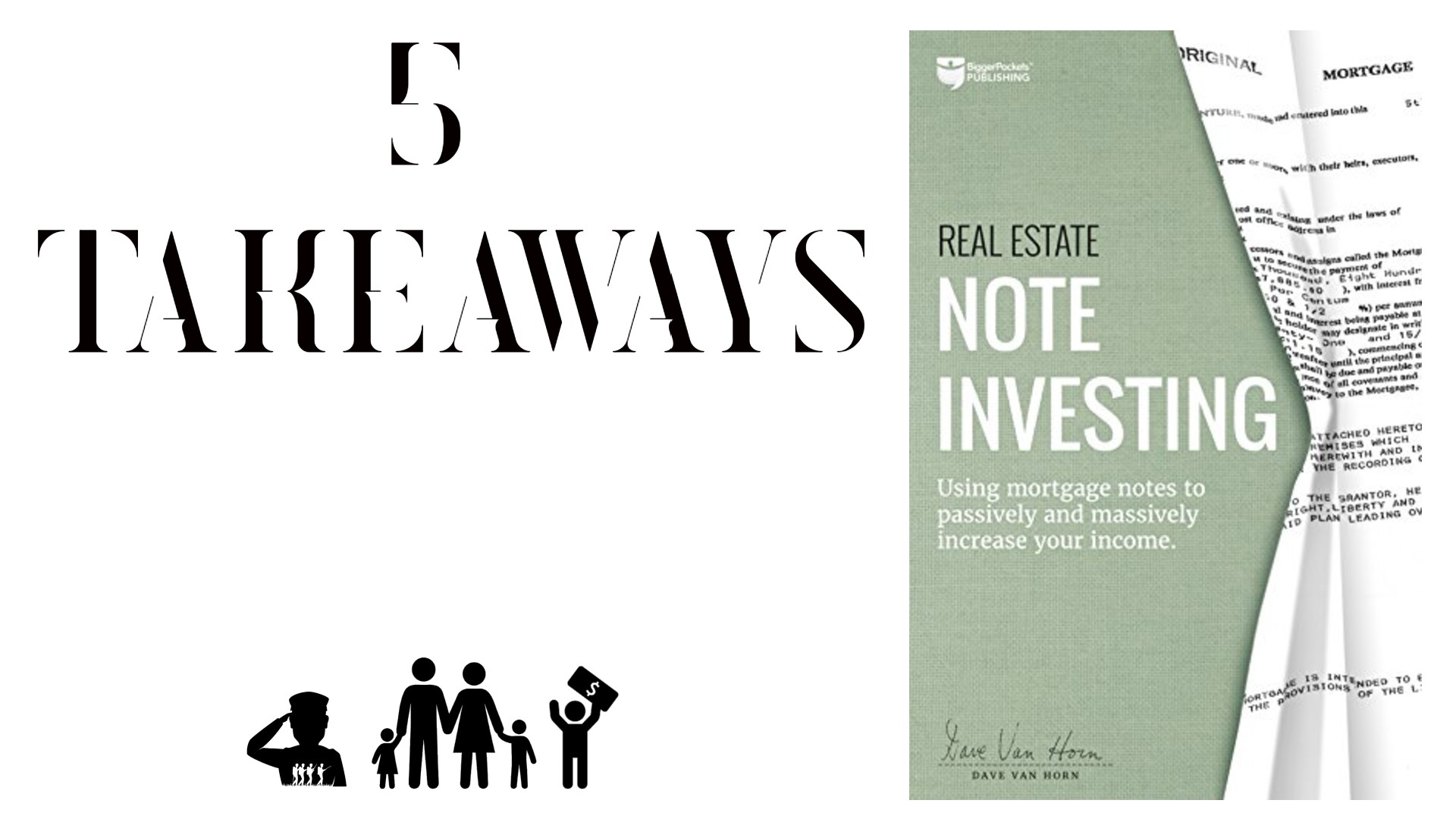Investing in real estate notes could be your path to financial freedom. In the book “Real Estate Note Investing,” author Dave Van Horn walks us through all the trial and error that lead him to real estate note investing.
He starts by explaining how he used credit cards and home equity loans to invest in hard property. Then he turned to private money and hard money loans. Finally, he started down the path of real estate note investing.
What is real estate note investing? Every loan that originates is considered a note: your car loan, student loan, credit card, or home equity loans- all notes. The difference is that the bank usually “holds the paper” or owns the note.
When you become a real estate note investor, you now hold the note. That means that you own the loan of the property. You are not a landlord; you are the bank. Once you get a portfolio of good notes, it will provide a steady, passive income. If you are not into the landlord business, this may be the way to go. Let’s get into my five takeaways.
1) There are two types of notes- performing and non-performing. As you may have guessed, non-performing notes are distressed homeowners. You may be able to obtain these notes at a steep discount.
2) Re-performing notes are non-performing notes after being saved. If you can work with the distressed homeowner to get them back on track, the loan will still be viable. Distressed notes are an excellent way to make large profits because you can buy them at a discount.
3) Notes in America may be costly because housing, in general, is expensive. However, this business model may work well with tiny homes, mobile homes, or even overseas. The business model is solid; getting the capital is required would be the tricky part.
4) Buying institutional notes (from banks) may be difficult without large amounts of capital. You can buy homes and create your own notes, or you can create a partnership. There are also groups of note investors that pool their money to buy large baskets of institutional notes.
5) Note investing may be for you if you want “mailbox money.” Passive income is a reality if you can obtain notes at great discounts. The world of notes is very complex, and there can be pitfalls, but the overall goal is to create passive income for retirement and generational wealth.
If real estate notes seem a little too large for you, you can do the same thing with smaller items. You can make notes with pure loans with no collateral. Unsecured notes may be a little riskier, but it is also more accessible. I like the idea of becoming a bank.
This book has so much information on creative financing that it could have been two complete other books. Buying homes with credit cards, home equity loans, hard money, private money, fundraising, and syndication- the author describes it all in detail. If you have an inkling to go into real estate, this is a book of powerful techniques- a capital investing guide. The main takeaway is to be creative- saving and using your own money takes no financial education. Learn and use leverage effectively to make real estate your wealth generation avenue. “Real Estate Note Investing” is a must-buy for any aspiring real estate investor.

Check out our Merchandise Shop on Redbubble: (here)
Follow us on our Facebook Page (here)
Join our Facebook group (here)
Follow us on Pinterest at:
Disclosure: I am not a financial advisor or money manager, and any knowledge is given as guidance and not direct actionable investment advice. I am an Amazon Affiliate. Please research any investment vehicles that are being considered. I wrote this article myself, and it expresses my own opinions. I am not receiving compensation for it. I have no business relationship with any company whose stock is mentioned in this article.

Leave a Reply